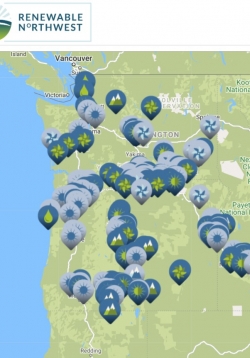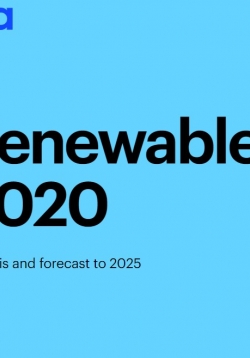
A great in-depth 101 on the electrical grid (10:24 runtime, includes and ad for the creator's sponsorship) which covers many of the basics of the purpose and issues in the electrical grid.

A great in-depth 101 on the electrical grid (10:24 runtime, includes and ad for the creator's sponsorship) which covers many of the basics of the purpose and issues in the electrical grid.

FWEE is a partnership of public power providers in the Pacific Northwest and other organizations that promote water and energy education. The site is a wealth of information for many aspects of hydropower generation, including a full list of projects in the Pacific Northwest, a video on the history of hydropower, infographics with information on fish ladders, generators, a full hydropower unit, and information on an annual Hydropower STEM Academy linking students to hydropower science and careers.

An interactive map-based listing of major operating, proposed, approved, or other renewable energy projects in the Pacific Northwest US, including owners and generating capacity.

Explore historical data and forecasts for all renewables sectors and technologies. Renewables 2020 includes a dynamic data dashboard which enables users to explore historical data and forecasts for all sectors and technologies. The associated Renewables 2020 dataset gives full access to all of the data available in this dashboard, plus additional premium data for all sectors and technologies, including additional historical years.
This lesson is a (stand alone or in-unit) guided non-fiction research and writing project, which includes a differentiated choice menu and list of ideas for publishing the completed project. Each student will choose one of ten energy sources to research,...
Students will cover portions of a solar cell and measure the output with a multimeter. They will compare and contrast the outputs of different percentages shaded and different configurations using the same percentage shaded.
This lesson begins with basic chemistry with regards to atomic structure. The lesson then moves to understanding the special properties of silicon as a photoelectric semi- conductor. Building on this, the basic structure of photovoltaic solar cells is...
The purpose of this lesson is for students to obtain base knowledge of how renewable and non-renewable energy is generated and identify differences between renewable resources and fossil fuels. Students will research the potential long-term and short-term...
During this introduction lesson series students will explore the guiding phenomenon to understand e-waste and connect it to battery design. Students will utilize online resources to learn about problems from e-waste around the world and the environmental...
This lesson is designed to be completed in three 80-minute sections. The teacher will facilitate student research on solar cell designs centering around the engineering problem: How can we make a cheaper, cleaner or more efficient solar cell? Teachers...
Bonneville Environmental Foundation
1500 SW 1st Avenue, Suite 710
Portland OR 97201
phone: 503-248-1905